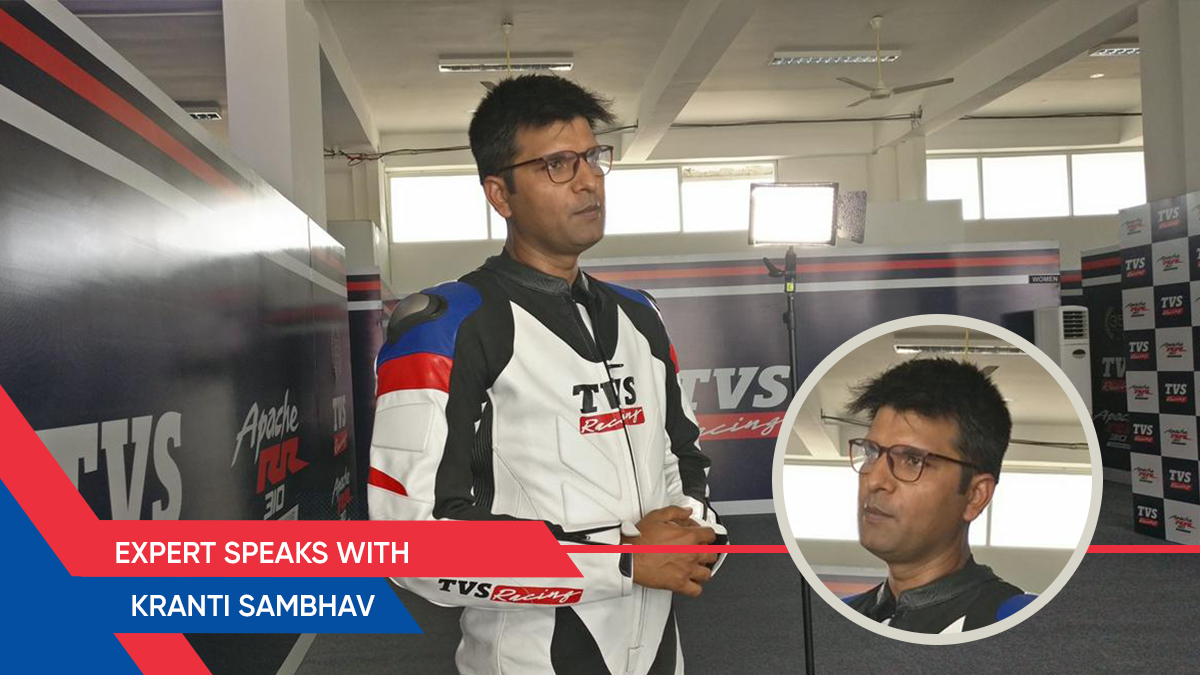The Indian motoring journalism scene is studded with many luminaries, most of whom have chosen English as their language of communication. Among the stalwarts, Kranti Sambhav stands tall as a beacon for the motoring audience of the Hindi language. A pioneer of sorts for motoring auto shows in Hindi and going strong even after two decades, Kranti is the quintessential TV guy with whom the Hindi audience in India identifies the most. In this conversation, Kranti tells us everything, right from what drew him towards motoring to what keeps him going...
How did you get introduced to the world of motoring, and what drew you towards taking up motoring journalism as a profession?
Thanks for this question, as it made me think deeply for the first time as to where it all started. As for my first joyride, it was in my cousin's car, and as far as two-wheelers go, it was my father's scooter. These first experiences taught me how machines work and how to service and maintain them. As for my romance with motoring, strangely, it started because of certain advantages that my house in Patna offered. To elaborate, the roads in Patna were pathetic those days, especially during the monsoons, when half of the city was submerged in water and looked like a lake. My house, which was situated on an elevation, was an island of sorts for my relatives and my father's friends. They used to park their vehicles at our house whenever it rained heavily. Our lawn, or space right outside the entry gate for the house, served as an unofficial parking lot for their vehicles. At such times, I used to have access to most of the keys of the vehicles parked, which I gleefully spent a lot of time exploring.
What, according to you, are some of the key qualities that a good motoring journalist should possess?
There are some basics, including having a good command of language and grammar, a knack for storytelling, the ability to do solid research etc. Apart from these essential qualities, I would like to mention two main attributes that a good motoring journalist should possess.
First, any motoring journalist should understand the fine line that separates an enthusiast from a fan. These days, it is a very hazy line, as the consumer does not know the difference between motoring journalists, motoring bloggers, and motoring influencers. Since we are all competing in the same space and cater to roughly the same set of viewers, we often get confused. Anyone wanting to get into this field needs to understand this reality and find his or her own space. Once you have that clarity comes the second quality - a profound sense of responsibility and answerability. One should not forget that people watch us, read us and follow us, thinking that we are looking out for them. We simply can't be irresponsible on that front. We have to ensure that we are true to our audience at all times.
How have the expectations of the audience in the auto segment changed over the years?
The audience today is more vocal and very particular about the relevance of the content. There has also been a general lack of trust in mainstream news media lately, and in the case of motoring journalism, the audience demands more transparency. However, the most significant change is the awareness level among the common enthusiasts, which keeps me on my toes. I am always nervous before publishing any new video, and I always have this feeling that I may have missed something in the story for which I might get angry messages.
You were the pioneer in setting up Hindi language motor shows. Tell us about your journey?
The journey has been very enriching and full of excitement. The kind of love and support I got from ordinary enthusiasts has been overwhelming. I never expected this, and it is unbelievable that people still remember what I said about a car five or eight years back. This shaped my journalism and my personality in a way. When I started, there were no Hindi shows anywhere, and today the internet in India is all about Hindi. Every publication doing its shows and videos only in English has either turned to Hinglish or has a separate Hindi platform. Initially, Hindi viewers mainly were customers, and the stories we did were generally about buying decisions. Gradually we saw a bi-directional shift, where Hindi speaking viewers started getting into the enthusiast zone and enthusiasts who previously associated only English with motoring started expressing their thoughts in Hindi. YouTube and Facebook changed the grammar, and today I am doing videos in Hinglish as well.
With the sudden boom in regional language content, how can one still maintain the niche audience?
Be yourself. The viewership and consumption of motoring content follow the same pattern that we have seen in other genres. There is a core set of audience for everyone who connects with you and stays with you. They will sample everything but will always come back to you. This will happen only when you are yourself, consistent and honest. This is the only way to create and nurture a set of audience that believes your word and is your brand ambassador.
Any words of wisdom for the youngsters who aspire to become motoring journalists?
Read and research
Work on your language
Write as much as possible
Make people the compass of your stories. Don't take them for granted
Look for the manufacturer's intention behind any product
Look for the value the product offers!



Comments (4)
ZAP
17 Jan 2022
ZAP
14 Feb 2022
ZAP
14 Feb 2022
ZAP
23 Jun 2022